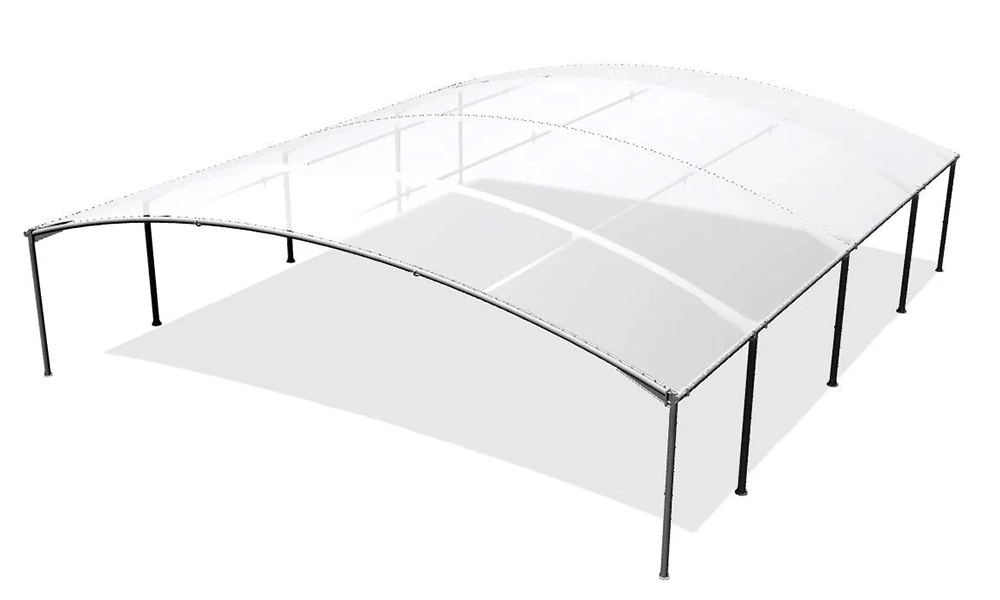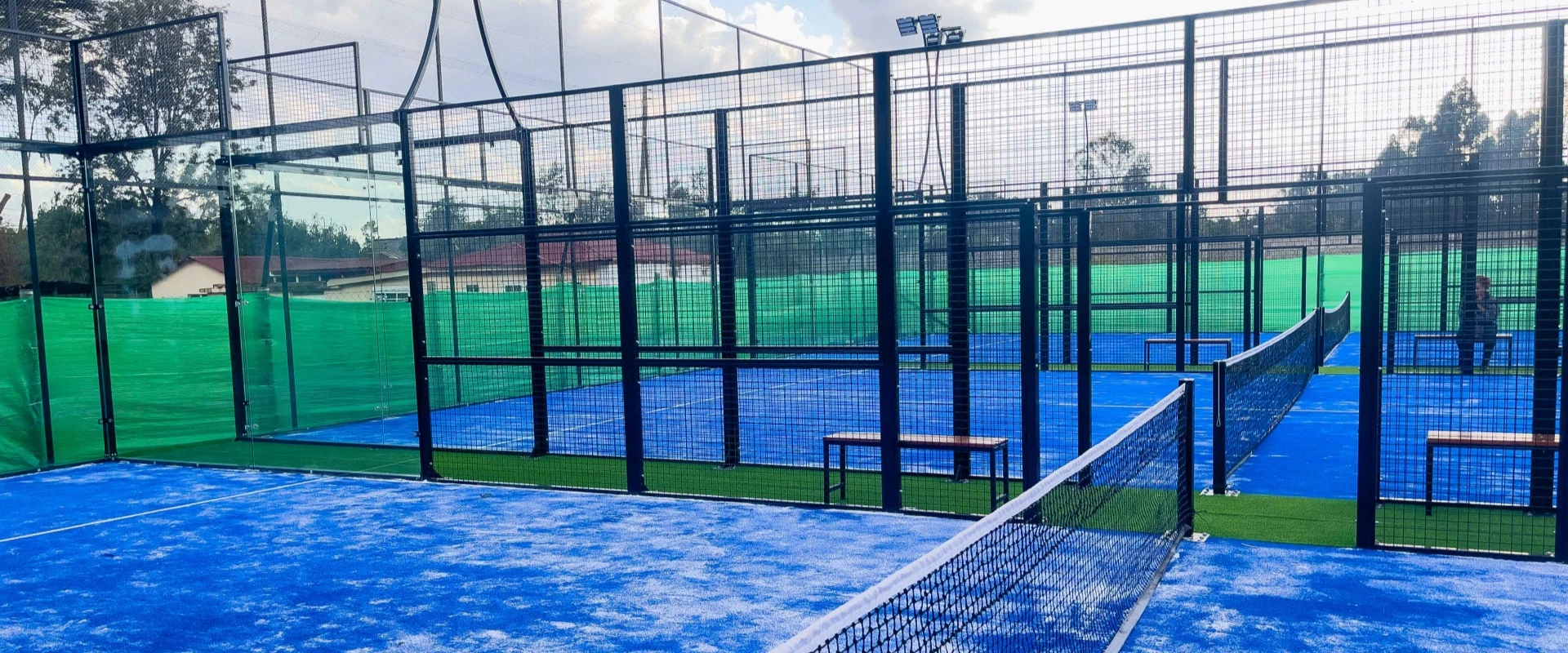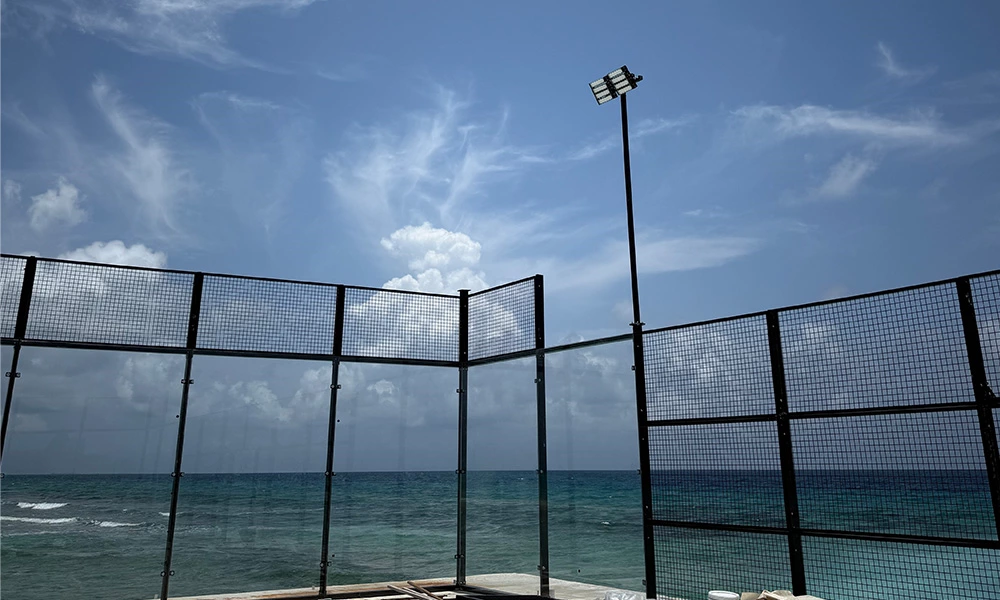Dimensiones y ventajas del tejado de una cancha de pádel
GZUNIPADEL El tamaño y la resistencia al viento son dos consideraciones importantes a la hora de diseñar y construir un techo adecuado para pistas de pádel (una combinación de squash y tenis). A continuación, se ofrecen algunas pautas y recomendaciones específicas:

Dimensiones estándar
Dimensiones de la pista
Las dimensiones estándar de una pista de pádel son 20 m (largo) x 10 m (ancho).
Altura del techo
Para garantizar una altura libre adecuada, el techo debe tener un mínimo de 6 m de alto, y se recomienda un mínimo de 8 m para permitir un espacio adecuado para maniobras como los globos.
Cobertura del techo
El techo debe cubrir toda la pista y extenderse al menos más allá del borde de la pista para proporcionar protección adicional contra la lluvia o la luz solar directa.
Resistencia al viento
Selección de materiales:
Utilice materiales resistentes y duraderos, como estructuras de acero y láminas de policarbonato o materiales de doble membrana que tengan una buena resistencia al viento.
Diseño estructural:
Al diseñar un techo, asegúrese de que tenga una buena resistencia al viento. Tenga en cuenta los siguientes puntos:
Cálculo de la carga del viento:
Realice un cálculo detallado de la carga del viento en función de la velocidad del viento local y las condiciones climáticas para garantizar que la estructura pueda soportar las fuerzas de viento máximas esperadas.
Refuerce la estructura
Agregue elementos de refuerzo al diseño, como vigas de refuerzo y columnas de soporte, para aumentar la estabilidad de la estructura general.
Diseño aerodinámico
Use un diseño aerodinámico para reducir la resistencia al viento y los vórtices, y reducir el impacto del viento en la estructura.
Normas de seguridad
Siga los códigos de construcción y las normas de seguridad locales para garantizar que el diseño de la estructura del techo cumpla con los requisitos de resistencia al viento.
Sugerencias de implementación
Diseño y construcción profesionales:
solicite a ingenieros de construcción e ingenieros estructurales profesionales que diseñen y construyan para garantizar la seguridad y la estabilidad del techo.
Inspección y mantenimiento regulares:
inspeccione y mantenga regularmente el techo, repare cualquier daño o desgaste de manera oportuna y garantice su resistencia al viento a largo plazo.
El diseño de un techo para una cancha de pádel requiere una consideración integral del tamaño y la resistencia al viento, la selección de materiales y diseño estructural adecuados, y garantizar el cumplimiento de las normas y regulaciones de seguridad pertinentes.




